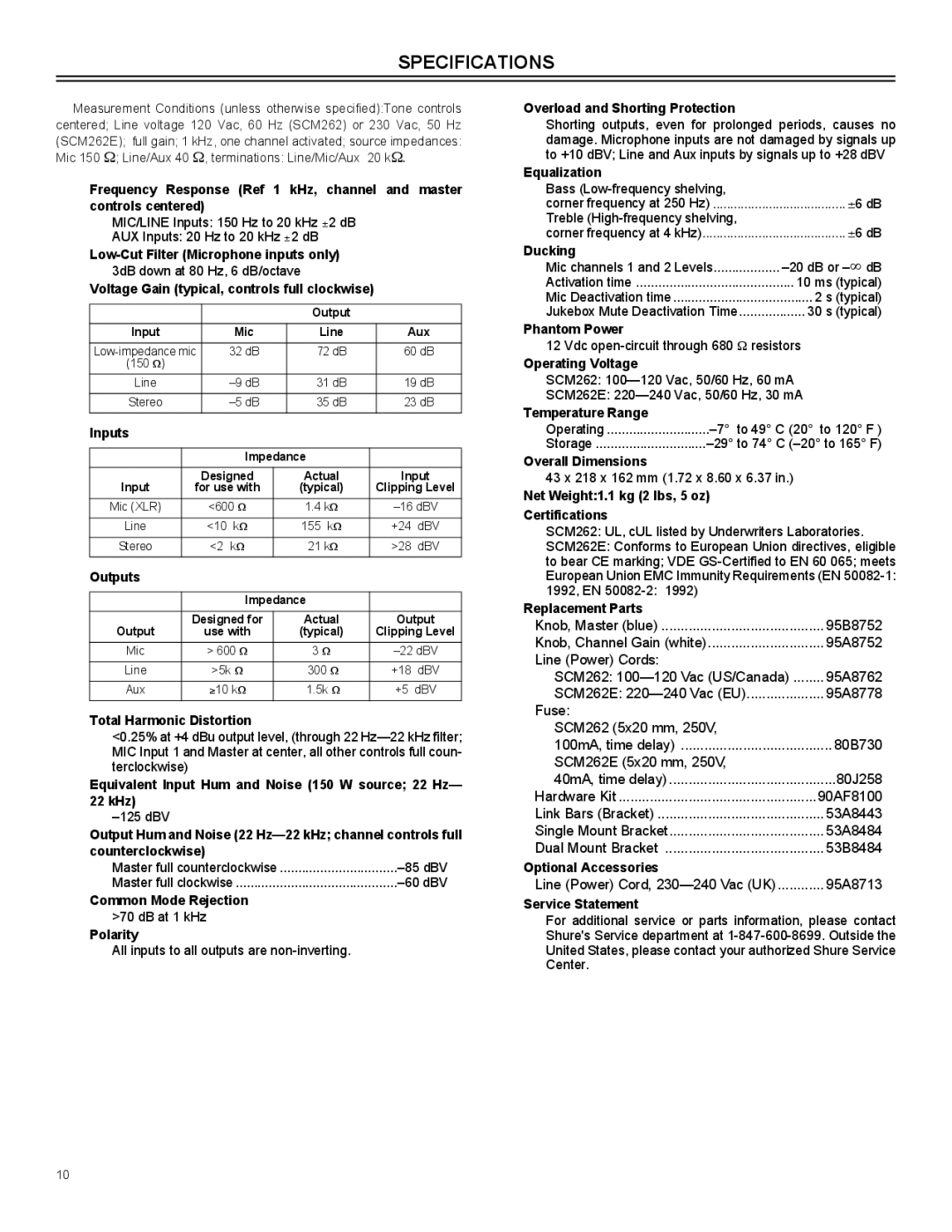SCM262 specifications
The Shure SCM262 is a versatile and highly functional automatic mixing console designed for a variety of applications, including corporate events, conferences, and live performances. Renowned for its superior audio quality and user-friendly design, the SCM262 is favored by professionals in the audio industry.One of the standout features of the SCM262 is its advanced automatic mixing technology. This console utilizes a patented SmartSensing technology that automatically adjusts the audio levels based on the number of active microphones. This ensures that the audio output is controlled and clear, minimizing background noise and eliminating the hassle of manual adjustments during dynamic events.
The SCM262 supports up to 12 microphone inputs, making it suitable for environments with multiple speakers. Each input channel is equipped with high-quality preamps that provide a clean and transparent sound. This is particularly important in settings where speech intelligibility is critical, such as in lecture halls or conference rooms.
Another notable characteristic of the SCM262 is its flexibility in connectivity. The console offers balanced XLR outputs, allowing for seamless integration with other professional audio equipment. Additionally, the unit features a robust indicator system, including LED indicators that provide clear visual feedback on the status of each microphone channel.
The SCM262 also includes a variable high-pass filter for each input channel. This feature helps to reduce low-frequency noise, ensuring that the main audio signal is free from interference. Furthermore, the console has a built-in phantom power supply for condenser microphones, making it compatible with a wide range of mic options.
User convenience is enhanced through the unit's intuitive front panel interface. Simple controls and clearly labeled functions allow for quick adjustments, ideal for technicians on the go. The SCM262 also comes with rack-mountable options, allowing for easy installation in professional audio setups.
In summary, the Shure SCM262 is an exceptional choice for those seeking reliable automatic mixing capabilities. With its advanced SmartSensing technology, extensive input options, exceptional audio quality, and user-friendly design, the SCM262 stands out as a leading solution for achieving high-performance audio in various settings. Whether for corporate use, educational environments, or live performances, this console offers the reliability and features required by professionals in the field.
